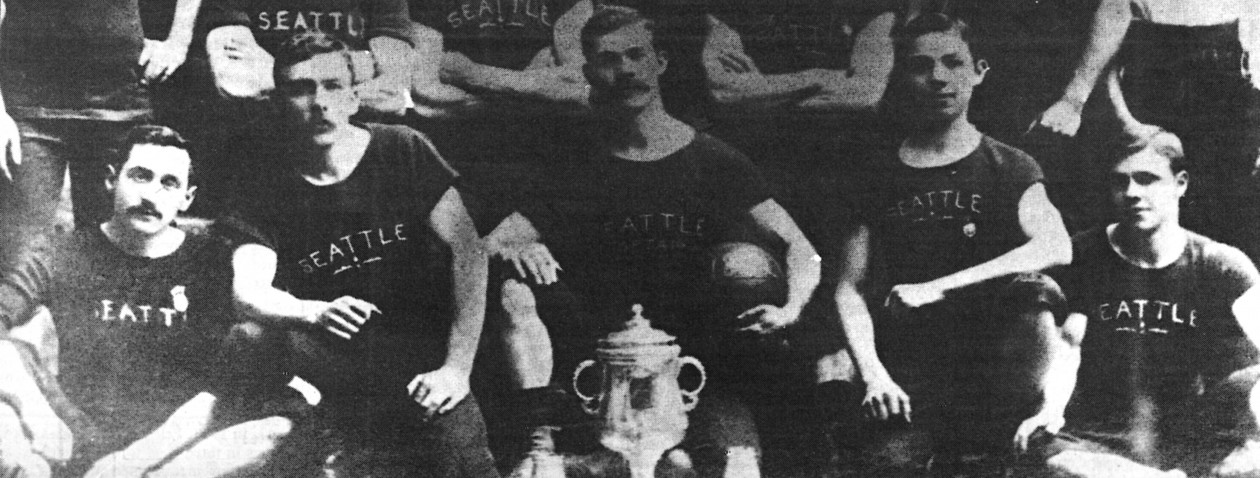That only scratches the surface of a coach’s duties. They are the club’s face. It can be a lonely job and exhilarating, all at once. And whatever the case, they relish that responsibility. Ultimately, although each goes about their business with their own unique style, their mission is success.

From John Best in ’74 to Sigi Schmid today, much has changed in the managing profession, and yet with all the science, knowledge and money now influencing world football, most of the same standards still apply: observation, imagination, communication and perseverance.
Like Schmid and Alan Hinton in ‘94, Best put together a team from scratch. His task was not only to win, but also win the fans. He needed to sell players on the city and sell the community on the sport .
“John Best deserves a lot of credit,” says Sounders original Dave Gillett. “He got a lot of people of good character to do the extra work and promote the game, both in that first season and the future.”
Gillett was one of those plucked from unfashionable British clubs, who waved to the throng on opening night, setting Seattle’s love affair with soccer in motion. He and several other originals remain local residents to this day.

Handsome and articulate, Best charmed fans and challenged his players. “John made us all feel we were great players,” recalls Jimmy Gabriel, “and you’d tell yourself, ‘I’ve got to bring that greatness out.’ That’s what John was all about.”
When Gabriel succeeded Best as coach, he didn’t give up playing altogether. Winless in his first three matches and down 2-nil at home to Portland, he inserted himself into the game. Immediately Gabriel went gung-ho into a tackle, tearing his hamstring, but infusing a new energy into his club. Seattle came back to win, 3-2.
“Jimmy was the best coach I’ve had in terms of motivating players,” says Jimmy McAlister. “He’s just a great human being. He cares about everything, and you wanted to play well for him.”

Hinton assumed the helm in 1980. Like Best and Gabriel before him, he was still in his 30s and would be managing players who were once his peers. As coach, he drew distinct lines and borrowed from his days under the legendary Brian Clough as to pushing people’s buttons.
“Al was always looking for opportunities to poke and prod his players,” says Brian Schmetzer. “He did it with me. He wanted me to be a better player and also a better person.”
Like Clough, Hinton loved acquiring under-valued, bargain players. “I know and recognize talent,” says Hinton. He was meticulous in planning set plays, acute at putting players into specific roles and yet also hands-off, letting mostly his senior players sort out matters on the field.
After winning the 1995 A-League title, the torch was passed from Hinton to his protégé, Neil Megson. Like Gabriel, a former captain and an active player, Megson was adamant that his men give everything but enjoy themselves in the process. “Every road trip, every night after a game we would go out as a team and have a party atmosphere, win or lose,” he shares.

Peter Hattrup played for Hinton, Megson and Bernie James. The latter two were defenders, yet Hattrup contends they were more likely to push numbers forward. Hinton termed himself “a terrible defender. So I loved defenders who could defend, but when they’re on top of things there’s no reason they can’t contribute to the offense.”
During his two Sounders stints, Jason Farrell played under all four coaches, including Schmetzer. “They were all what you call a player’s coach,” explains Farrell. “They all got players to play and battle for them, although in different ways.”
In-tune coaches know when there’s been enough talk, enough film. Hinton has been known to conduct cricket matches and–before the ’95 final–flag-football. Wiffle ball has occasionally been Schmid’s alternative.

Every coach is an amalgam of others they’ve admired. Besides Hinton and Gabriel, Schmetzer was also influenced by Bruce Rioch’s strong leadership at FC. For Schmid, some of the influencers are lesser known but impactful just the same, whether it’s technical emphasis or taking opponents out of their comfort zone or understanding the player’s mindset.
“I want to be a coach who respects his players, who’s not stubborn but willing to change or adjust something if that’s what’s needed. In the end, everyone needs to buy in if you want to succeed.”

You’ve got to work hard, pay attention to details, know everything about your opponent, he says. But you don’t necessarily share everything you know with the players. They just need to know the coach is prepared.
“It’s a lot of little things,” Schmid says. “It’s the little details that can add up to derail the train. “
